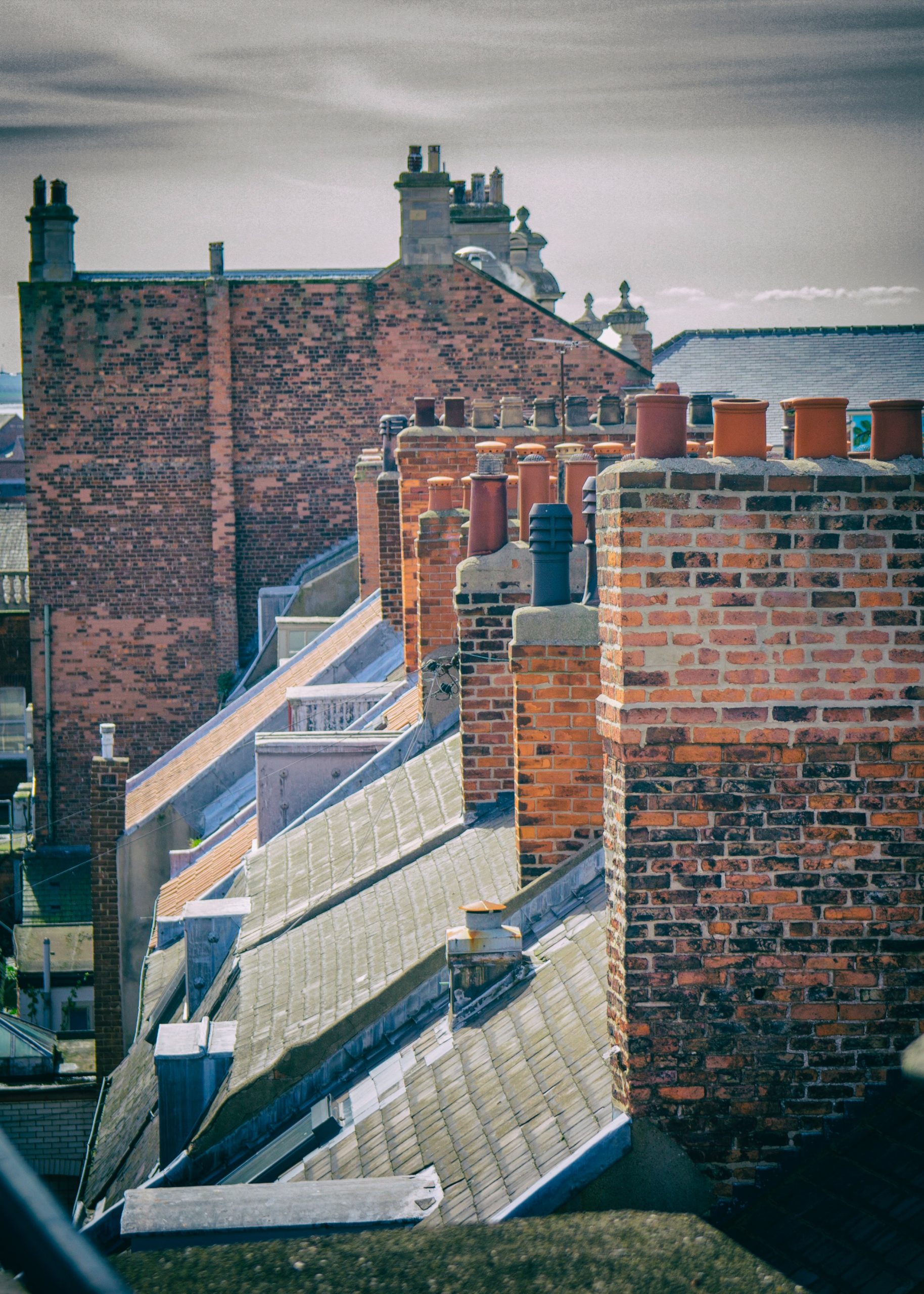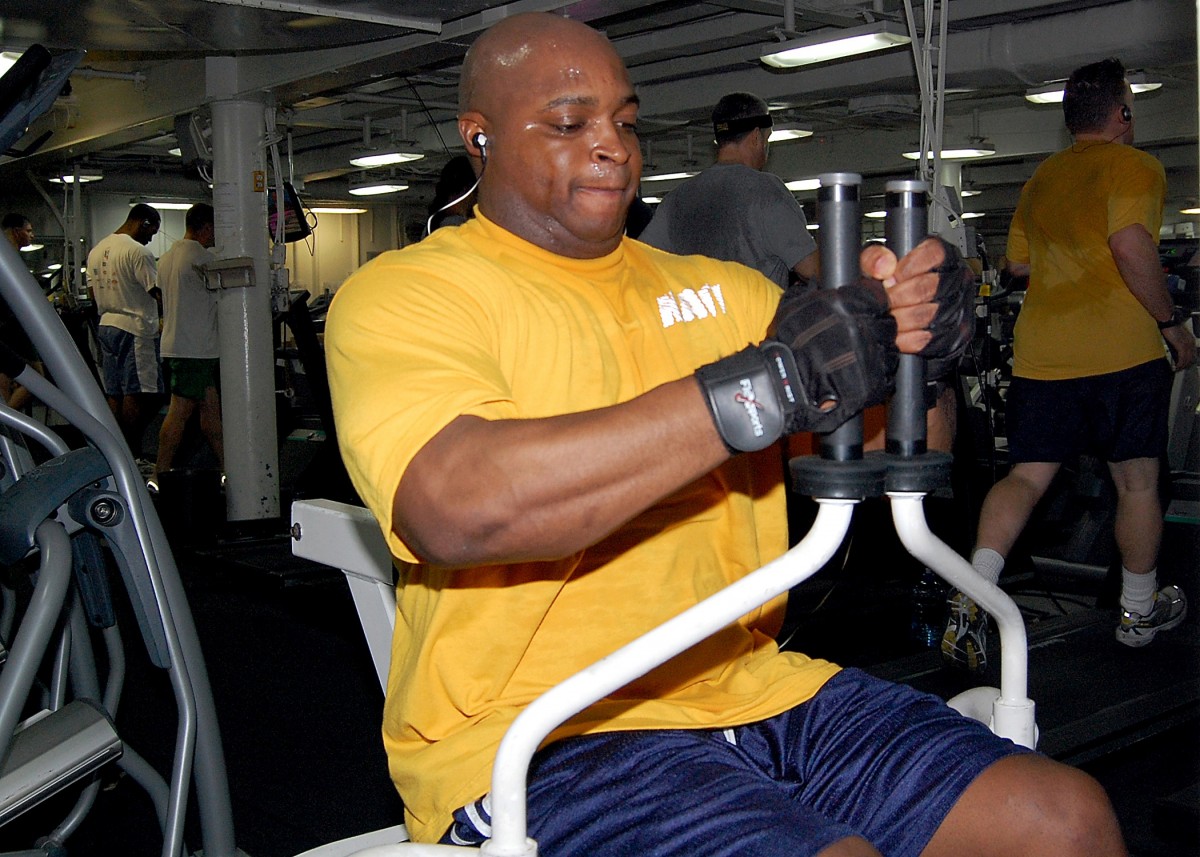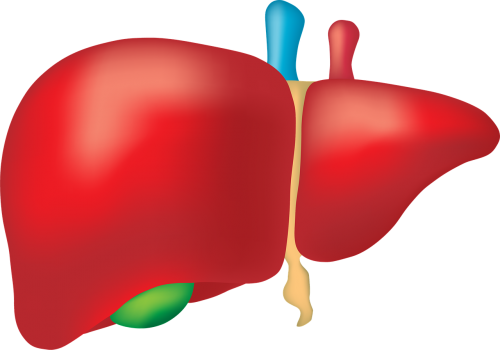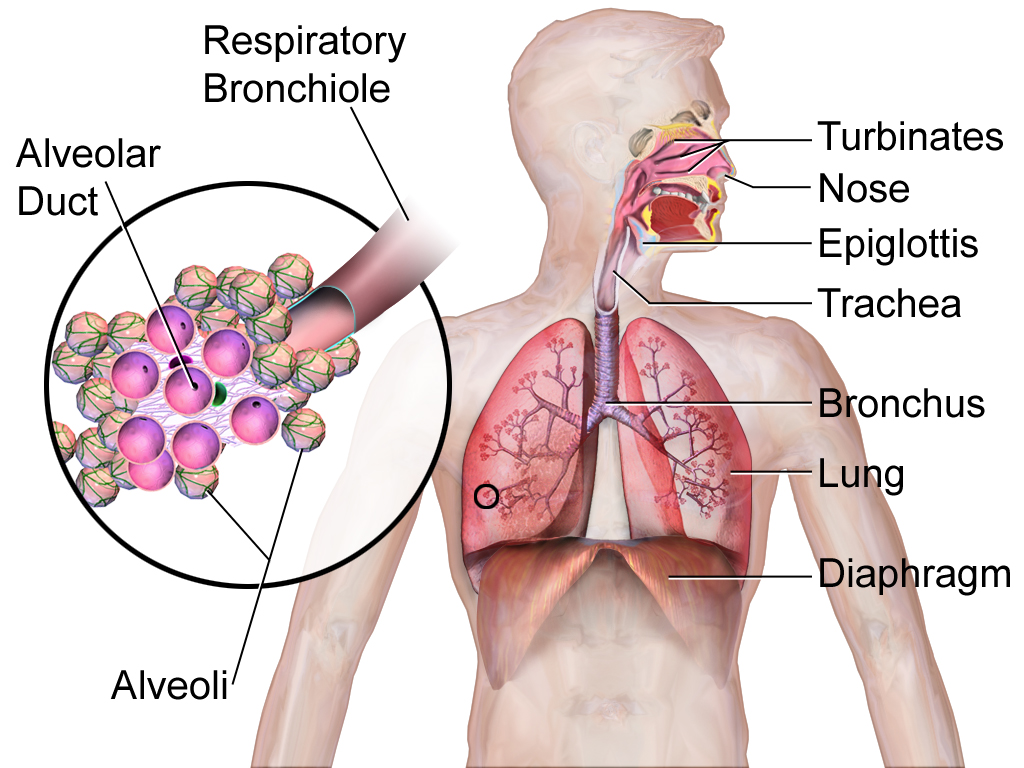How Are The Lungs Skin And Liver Involved In Excretion
sixteen.2 Organs of Excretion
Created past CK-12 Foundation/Adjusted by Christine Miller

Getting Rid of Wastes
The many chimneys on these houses are one style that the inhabitants of the home get rid of the wastes they produce. The chimneys miscarry waste gases that are created when they burn fuel in their furnace or fireplace. Think near the other wastes that people create in their homes and how nosotros dispose of them. Solid trash and recyclables may get to the curb in a trash can, or in a recycling bin for pick upwards and transport to a landfill or recycling centre. Wastewater from sinks, showers, toilets, and the washing machine goes into a main sewer pipe and out of the house to bring together the community'south sanitary sewer system.
Like a busy home, your trunk also produces a lot of wastes that must exist eliminated. Like a home, the manner your torso gets rid of wastes depends on the nature of the waste matter products. Some human body wastes are gases, some are solids, and some are in a liquid land. Getting rid of body wastes is called excretion, and at that place are a number of unlike organs of excretion in the human body.
Excretion
is the process of removing wastes and excess water from the body. Information technology is an essential process in all living things, and it is one of the major ways the human torso maintains . It also helps prevent harm to the trunk. Wastes include past-products of — some of which are toxic — and other not-useful materials, such equally used up and broken downwards components. Some of the specific waste material products that must be excreted from the body include carbon dioxide from , and from protein catabolism, and from nucleic acid catabolism.
Excretory Organs
Organs of excretion include the , , , , and (see Figure 16.2.2). Together, these organs make upward the . They all excrete wastes, merely they don't work together in the same mode that organs do in most other torso systems. Each of the excretory organs "does its own matter" more-or-less independently of the others, only all are necessary to successfully excrete the full range of wastes from the human body.
Effigy 16.2.2 Internal organs of excretion are identified in this analogy. They include the skin, liver, large intestine, lungs, and kidneys.
Peel

The is part of the integumentary system, just it also plays a office in excretion through the production of by sweat glands in the dermis. Although the primary role of sweat production is to cool the body and maintain temperature , sweating also eliminates excess water and salts, as well as a small corporeality of urea. When sweating is copious, as in Figure xvi.two.3, ingestion of salts and water may be helpful to maintain homeostasis in the body.
Liver

The liver (shown in Figure 16.ii.4) has numerous major functions, including secreting for digestion of lipids, synthesizing many proteins and other compounds, storing and other substances, and secreting endocrine hormones. In addition to all of these functions, the liver is a very of import organ of excretion. The liver breaks downwards many substances in the blood, including toxins. For instance, the liver transforms — a poisonous past-production of protein — into , which is filtered from the blood by the kidneys and excreted in urine. The liver also excretes in its bile the protein , a byproduct of that forms when ruddy blood cells dice. Bile travels to the pocket-sized intestine and is then excreted in by the .
Large Intestine
The is an of import role of the digestive organisation and the terminal organ in the gastrointestinal tract. As an organ of excretion, its main office is to eliminate solid wastes that remain subsequently the digestion of food and the extraction of h2o from indigestible affair in food waste. The big intestine also collects wastes from throughout the trunk. secreted into the gastrointestinal tract, for instance, contains the waste product from the liver. Bilirubin is a brown pigment that gives human its characteristic brown color.
Lungs
The lungs are part of the respiratory organization (shown in Figure sixteen.2.5), but they are besides important organs of excretion. They are responsible for the excretion of gaseous wastes from the body. The main waste matter gas excreted by the lungs is carbon dioxide, which is a waste product of in cells throughout the body. Carbon dioxide is diffused from the blood into the air in the tiny air sacs called in the lungs (shown in the inset diagram). Past expelling carbon dioxide from the blood, the lungs help maintain acrid-base . In fact, it is the pH of blood that controls the rate of breathing. Water vapor is also picked upward from the lungs and other organs of the respiratory tract as the exhaled air passes over their moist linings, and the water vapor is excreted along with the carbon dioxide. Trace levels of another waste matter gases are exhaled, also.

Kidneys
The paired kidneys are often considered the primary organs of excretion. The master function of the kidneys is the elimination of backlog water and wastes from the bloodstream by the production of the liquid waste matter known as. The primary structural and functional units of the kidneys are tiny structures chosen nephrons. filter materials out of the blood, return to the claret what is needed, and excrete the rest as urine. As shown in Effigy sixteen.2.half dozen, the kidneys are organs of the urinary organization, which as well includes the ureters, bladder, and urethra — organs that ship, shop, and eliminate urine, respectively.

By producing and excreting urine, the kidneys play vital roles in body-wide . They maintain the correct volume of extracellular fluid, which is all the fluid in the body outside of cells, including the claret and lymph. The kidneys likewise maintain the correct balance of salts and pH in extracellular fluid. In addition, the kidneys function as endocrine glands, secreting hormones into the blood that command other body processes. You can read much more about the kidneys in section 16.4 Kidneys.
- is the process of removing wastes and excess water from the torso. It is an essential procedure in all living things and a major way the man body maintains .
- Organs of excretion include the skin, liver, large intestine, lungs, and kidneys. All of them excrete wastes, and together they brand up the .
- The plays a role in excretion through the product of sweat by sweat glands. Sweating eliminates excess water and salts, as well equally a small amount of , a byproduct of poly peptide catabolism.
- The is a very important organ of excretion. The liver breaks downwards many substances in the blood, including toxins. The liver likewise excretes — a waste product production of — in bile. Bile and then travels to the , and is somewhen excreted in past the .
- The chief excretory function of the big intestine is to eliminate solid waste material that remains afterwards food is digested and h2o is extracted from the indigestible matter. The large intestine as well collects and excretes wastes from throughout the body, including bilirubin in .
- The are responsible for the excretion of gaseous wastes, primarily carbon dioxide from in cells throughout the body. Exhaled air likewise contains water vapor and trace levels of some other waste product gases.
- The paired are oftentimes considered the master organs of excretion. Their main function is the elimination of excess water and wastes from the bloodstream past the production of urine. The kidneys contain tiny structures called that filter materials out of the claret, return to the blood what is needed, and excrete the remainder as . The kidneys are function of the urinary system, which also includes the ureters, urinary bladder, and urethra.
- What is excretion, and what is its significance?
- Depict the excretory functions of the liver.
- What are the main excretory functions of the large intestine?
- Listing organs of the urinary system.
- Describe the concrete states in which the wastes from the human body are excreted.
- Give one case of why ridding the body of excess water is important.
- What gives carrion its brown colour? Why is that substance produced?
Why Can We Regrow A Liver (But Not A Limb)? MITK12Videos, 2015.
Are Sports Drinks Salubrious? | Fit or Fiction, POPSUGAR Fettle, 2014.
Why do we sweat? – John Murnan, TED-Ed, 2018.
Attributions
Figure 16.2.1
Chimneys/ Kingston upon Hull, England [photo] by Angela Baker on Unsplash is used under the Unsplash License (https://unsplash.com/license).
Figure 16.2.2
- Sweat or rain? past Kullez on Flickr is used under a CC BY 2.0 (https://creativecommons.org/licenses/by/two.0/).
- Kidney front – white from www.medicalgraphics.de is used under a CC Past-ND 4.0 (https://creativecommons.org/licenses/past-nd/4.0/) license.
- File:Liver Cirrhosis.png by BruceBlaus on Wikimedia Eatables is used nether a CC BY SA 4.0 (https://creativecommons.org/licenses/by-sa/4.0/deed.en) license.
- File:Human lungs.png by Sharanyaudupa on Wikimedia Commons is used nether a CC By SA 4.0 (https://creativecommons.org/licenses/by-sa/4.0/deed.en) license.
- Tags: Offal Mark Medical Intestine Liver by Elionas2 on Pixabay is used under the Pixabay license (https://pixabay.com/service/license/).
Figure 16.2.3
Source: https://humanbiology.pressbooks.tru.ca/chapter/18-2-organs-of-excretion/
Posted by: smithuntowent1983.blogspot.com


0 Response to "How Are The Lungs Skin And Liver Involved In Excretion"
Post a Comment